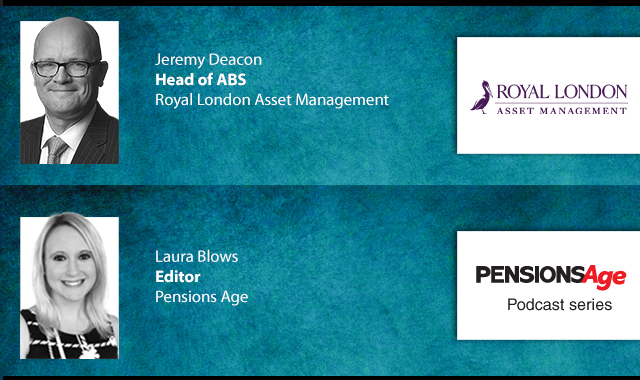Peter Davy explores whether the current low pricing is driving pension funds towards convertibles, or if the complexity of convertibles is preventing investors from taking the plunge
It’s easy enough to see the attractions of convertible bonds for pensions in theory: bond-like protection, a regular yield through a coupon, and the potential to benefit from gains in the equities market due to the option to convert.
And increasingly, pensions and other institutions have been testing those benefits in practice. Prior to the 2008 crisis, hedge funds dominated the market – many of them convertible bond arbitrage funds. They accounted for about 70 per cent of the market, reckons Amundi head of convertibles Pierre-Luc Charron, with the long-only investors holding the remaining 30 per cent. Since the sell-off by hedge fund investors in 2008 and 2009 brought the asset class to institutions attention, however, that 70:30 ratio has been reversed.
“Today the market is really dominated by the long-only investors,” says Charron.
Initially, of course, the attraction was largely down to the prices, which plummeted in 2008 as over-leveraged hedge funds were forced to sell. In some cases, it meant investors could pick up convertibles cheaper than the corresponding plain bond – effectively getting the equity option for free.
That tactical case couldn’t last, but the attractions remain, say fund managers – and particularly in the current market, where there is so much uncertainty. The benefit of convertibles goes beyond simply providing a mix of bond and equity exposure that could be achieved through a balanced mandate, they insist.
The added value is in the equity option. At a simple level, this enables investors to participate in increases in equities without risking the downside. Furthermore, if the underlying stock goes down, the delta – its sensitivity to equity price movements – declines (because the option is less likely to be used) and the bond component becomes more important – in effect reallocating away from equities.
Another way of looking at it is that the convertible gives investors a stake in volatility, since options are more valuable when markets are volatile, says Morgan Stanley Investment Management executive director Tom Wills. That gives an important element of diversification.
Traditionally, he estimates that about 50 per cent of convertible returns can be accounted for by equities; and about 30 per cent by credit markets. However, the remaining 20 per cent includes that volatility exposure unique to convertibles, and given the current uncertainties is likely to be increasingly highly valued by investors – particularly since investors cannot get this exposure anywhere else.
“There is no place to buy five-year options other than the convertibles market,” he explains. “You can buy three-month options, but not five-year options; convertibles are really one of the only places you can buy long-term volatility.”
These characteristics have given convertibles an impressive return profile, say managers. Look at them this year, points out Bluebay partner Mike Reed and they have returned about 3 per cent, beating the equity returns on the MSCI world, which is almost unchanged year to date, but have had half the price volatility. Over three, five and 10 years they’ve also consistently beaten equity returns – with much lower volatility.
“Look at their risk-rated returns and compared with equities they are far superior,” he says.
Added to that, some argue there is again a strong tactical case to be made. At RWC, Dan Mannix says valuations for the asset class are at similar levels to those that brought them to the fore the first time.
“They are actually very cheap now,” he argues. The implied volatility of convertibles compared to the equity volatility of the market means investors are paying very little for the potential upside from their options, he says– particularly if you pick the right convertibles.
“The last time we saw a similar level of cheapness in the market is probably mid-2009.”
Perhaps more importantly for investors, the dangers of a repeat of the sell-off that saw the asset class fall by more than a quarter in 2008, are far less. The much lower leverage now in the market means such an unwinding is unlikely to be repeated. For proof, managers point to the August of 2011, another difficult period for the market, but one where the ‘bond floor’ provided by convertibles held up. Losses were generally restricted to the value of the option.
“Look at the numbers for that month and convertibles did fine,” says CQS head of the convertibles team Oliver Dobbs. With fewer highly leveraged market participants (hedge funds and banks’ proprietary trading desks) so prevalent in the market before, the profile of the ownership of the investment asset class has changed.
“It’s a more stable and less volatile asset class as a consequence,” says Dobbs.
Cheyne Capital partner Akin Akinloye agrees, and says it should appeal to pension funds. “The asset class’ profile is very well suited to the fundamentally-based investor,” he argues. “Given that institutions tend to be more focused on long-term capital preservation and growth strategies rather than short-term trading, it is now very much in their ball park. Pension funds should be a natural audience.”
Not quite converted
If they are not, however, it is probably for a number of reasons.
One is that while the investment’s concept is easily understood, the complexity around the equity option can put investors off. It’s one of the reasons that while pension funds have been keen to look at options such as high yield, convertibles have traditionally been something of a ‘forgotten asset class’, according to PiRho Investment Consulting co-founder Phil Irvine.
“The broad concept – that it is a bond that converts into an equity – is not too difficult a concept to understand, but the technicalities of pricing are probably why they gravitated towards other asset classes.”
For some that means investors are right to be wary. LCP head of trustee investment consulting Garvin Orpin reckons not many pensions scheme managers are well placed to understand the particular terms of the options and accurately value them. He also thinks the asset class is most attractive from a tactical point of view.
“We think timing is important,” he says – and, again, pension investors are not always best-placed to make those calls.
His advice?
“If you want an equity buy an equity; if you want a bond, buy a bond.”
And whether that’s fair or not, managers concede that understanding has been an issue: “The perceived complexity has been a barrier – as has intermediaries’ lack of product knowledge,” says Schroders global convertible bond analyst Dorian Carrell. There is still, probably, more education to be done if investment is to widen.
Perhaps more significantly, whatever happens to demand, the supply of convertibles is uncertain. The attractions for issuers of convertibles is that they allow the business to raise money while offering lower interest than on a straight bond – it’s the price investors pay for the equity option.
However, with rates on bonds so low, the incentive to look to convertibles is lacking, while at the same time, the option dilutes the stock value, leading companies to be wary of issuing them where there’s uncertainty how their shares are performing. The result is that last year saw the lowest levels of issuance since 1997, and while this year started more strongly (in part because of an equity rally), issuance has again stalled with the macro economic uncertainty.
That’s a worry for investors, particularly when combined with the fact that the decline in hedge fund activity, while leading to a less volatile asset class, has also reduced liquidity. It’s one of the reasons that Royal County of Berkshire pension fund made a tactical investment in 2009 of about 10 per cent. However, its manager Nick Greenwood remains unconvinced by the strategic case.
“It is an asset class where liquidity can disappear very quickly if you’re not careful,” he warns.
Similarly, Mercer, which championed the tactical case in late 2008 and 2009, helping direct about $1 billion of its clients’ funds into convertibles, is now less enthusiastic.
“It hasn’t developed in the way we thought it might,” says Mercer bond boutique principal Alex Thomson. “It is a very capacity constrained universe.”
Even some fund managers admit it could be a problem if this doesn’t pick up. At Morgan Stanley, Wills says that while issuance is having only a minor impact today, it could become more pressing going forward.
“Not only are we getting less issuance but we are getting fewer issues than we want,” he adds: big stable companies that can borrow money cheaply in the straight bond market are the least likely to look to convertibles, skewing the market towards the higher yield end.
Having said that, as Wills notes, since maturities on convertibles are only three to five years, the market has always fretted about where the next issue will come from, and there’s little reason to support issuance won’t pick up. When it does, convertibles will look increasingly attractive.
“The conditions necessary for issuance are in place,” says Akinloye. “What we need is a bit of stability; once we see that there will be more issuance – and as interest rates pickup more again.”
As ever, the story could change quickly – and those that are alive to the options will be ready when it does.
Written by Peter Davy, a freelance journalist
Latest News
-
Reeves under pressure from businesses to force pension funds to up UK investments
-
Redesigned CDC model could boost retirement outcomes by 75%
-
Lessons from Europe: Breaking the inactivity cycle
-
Keeping track of the latest pensions dashboards connections
-
DB pension funding levels hold steady despite Budget speculation
-
Over half of LGPS leaders ‘unconfident’ of local investment opportunities in AA area
Private markets – a growing presence within UK DC
Laura Blows discusses the role of private market investment within DC schemes with Aviva Director of Investments, Maiyuresh Rajah
The DB pension landscape
Pensions Age speaks to BlackRock managing director and head of its DB relationship management team, Andrew Reid, about the DB pensions landscape
Podcast: Who matters most in pensions?

In the latest Pensions Age podcast, Francesca Fabrizi speaks to Capita Pension Solutions global practice leader & chief revenue officer, Stuart Heatley, about who matters most in pensions and how to best meet their needs
Podcast: A look at asset-backed securities

Royal London Asset Management head of ABS, Jeremy Deacon, chats about asset-backed securities (ABS) in our latest Pensions Age podcast
© 2019 Perspective Publishing Privacy & Cookies











Recent Stories